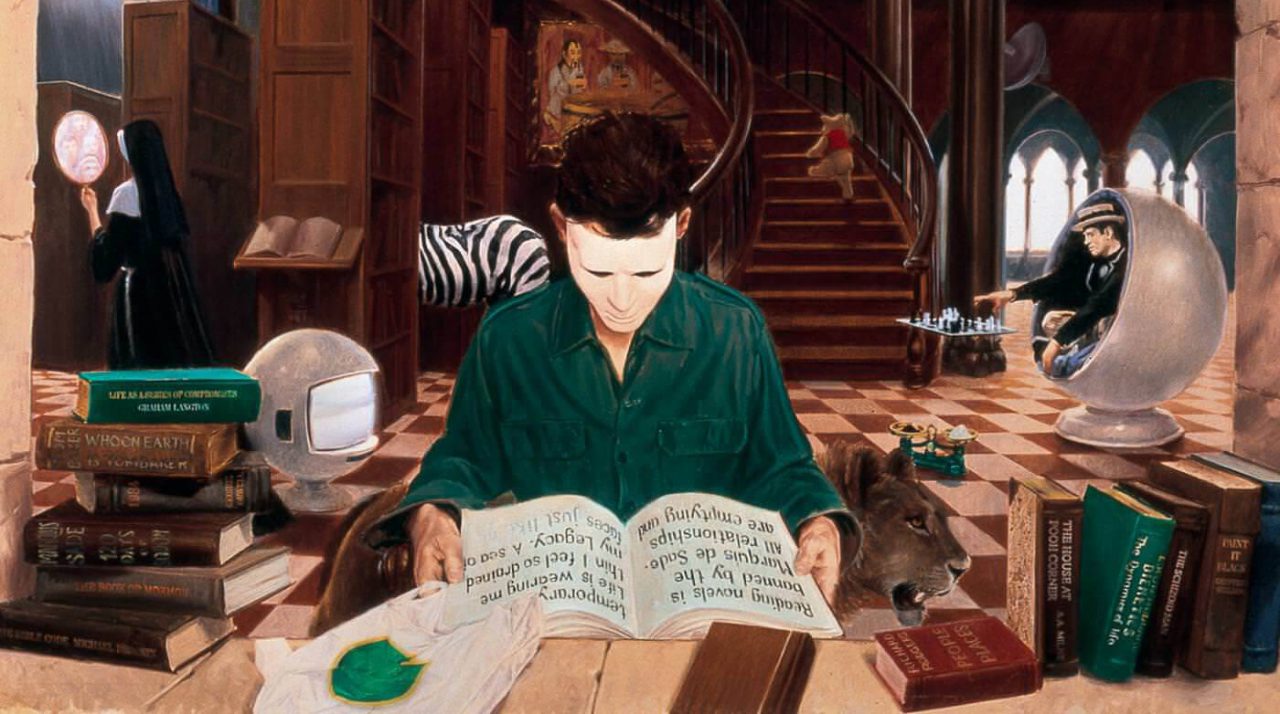The story so far: after kicking off with the Timewyrm saga in 1991, the Virgin New Adventures novel line spent early 1992 with the Cat’s Cradle trilogy, in which the TARDIS was damaged due to a crash with an early Gallifreyan time machine. At the end of Witch Mark, the final Cat’s Cradle novel, the repairs were completed using demonic protoplasm – causing the TARDIS to become corrupted, with consequences for the Doctor due to his symbiotic relationship with it. By the end of the chunk of novels I’m going to cover here, that problem will be resolved. Will this new plot arc turn out to actually be prominently relevant over these six novels, developed according to a consistent and thought-out plan? Or will authors just pay lip service to it whilst writing the book they want to write anyway, like they did with the previous seven books? Place your bets now…
Nightshade by Mark Gatiss

With the TARDIS mended, you’d expect everything would be fine – but just as a speck of contamination has made its way into the fabric of the machine, a kernel of discontent is nagging at the Doctor’s psyche. In fact, he’s outright snappish and irritable, to the point where Ace is shaken by one of his moments of bad temper. The Doctor realises it’s high time he and Ace slow down and did some mental stocktaking, so he lands the TARDIS in December 1968, near the sleepy Yorkshire village of Crook Marsham; elsewhere the Sixties are getting really exciting, but here they’ve almost entirely passed the village by. As they take in the surroundings, the Doctor discloses to Ace that he’s feeling his age, and badly misses the people from his past (when he loses his temper at Ace it’s because she’s messing with some of Susan’s stuff), and he’s seriously contemplating retirement. (He will, of course, eventually get around to acting on that in The Giggle.)
Meanwhile, Edmund Trevithick is trying to make the best of his own retirement. With his wife having died and his daughter having dropped out of society, Edmund now resides in the local old folks’ home. From 1953 to 1958, Trevithick was known up and down the country as Professor Nightshade, star of the science fiction show Nightshade – a Quatermass-like affair in which the heroic Professor investigated strange enigmas and thwarted alien monstrosities. With a chap from the BBC coming up to interview him in conjunction with the repeats currently airing, Trevithick is quite enjoying being back in the limelight again. What he doesn’t enjoy is people breaking his window late at night – people who call him by the name of Nightshade…
Trevithick is not the only local to be haunted by the ghosts of the past right now – nor, for that matter, is the Doctor with his maudlin thoughts of Susan and the other companions he’s left behind. And with these ghost encounters turning fatal, it’s clear that there’s something here for the Doctor and Ace to look into. The only prior association the village has with ghosts hails from strange stories about the old tumbledown Norman castle that used to loom over the village – long since destroyed in the Civil War, in a story which has its own peculiarities. Yet the site of the castle has now become home to a large radio telescope – and the research group there, led by Dr. Christine Cooper, has started receiving readings which they cannot make head or tail of. Clearly, the Doctor’s going to head down to the radio telescope (brushing aside his Post-Logopolis Stress Disorder) and get involved again – and perhaps this time he’ll be able to count on Professor Nightshade’s help!
Continue reading “The Virgin New Adventures: Nightshade To Deceit”





